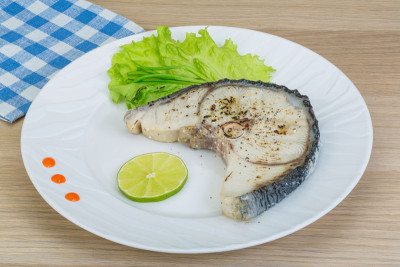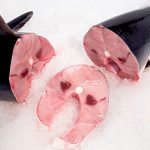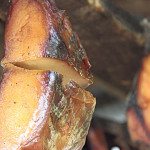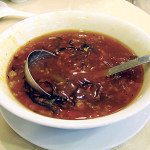
Sharks don’t merely exist to populate our nightmares and fill the programming schedule for Discovery Channel’s Shark Week. The apex predator sits atop of the food chain and helps to maintain the delicate balance of ocean life.
Every so often, shark meat finds its way into our sauté pans, is plunged into our deep fryers and is laid on our grill tops. Though there are no restrictions to buying and selling shark meat on Long Island, it is imperative to do so in a responsible manner. Shortfin makos, the most popular shark meat source on the island, is on the International Union for Conservation of Nature’s (IUCN) “red list” of species at risk of extinction. The Atlantic population is declining and “vulnerable,” with numbers estimated to be as low as just 30 percent of the species’ historic levels, according to the IUCN.
So when chumming the waters of shark consumption, the eater should carefully choose when and in what manner is appropriate. Eating the occasional shark in a restaurant or buying a few shark steaks at local fish markets certainly isn’t going to destroy the population. And when sharks are harvested for meat, about 85 percent of the shark is used. This stands in horrifying contrast to the appalling process of collecting fins for the Asian delicacy, shark fin soup.

In this practice, sharks are brought aboard, their fins are sliced off and the animal is thrown overboard into the ocean where it drowns, bleeds to death or is consumed by another animal. Unfortunately, a quick search on Yelp reveals many restaurants in Flushing, Queens, sell the soup featuring dried shark fins. But if adventurous eaters are looking for the flavor of shark fin but prefer not to partake in the barbaric process, check out Happy Buddha (135-37 37th St.) and Bodai Vegetarian (59-08 Main St.).
The veggie version of this infamous dish usually consists of carrots, celery and various other vegetables along with vegetarian shredded pork and squid. The key ingredient, the vegetarian shark fin, is made of a high-fiber collagen extracted from vegetables like green beans.
For a more guilt-free taste of shark, try the Trinidad treat Bake and Shark. In this dish, fried shark is piled on a round fried bread (the bake) and then drizzled with habanero sauce, tamarind sauce, various chutneys and other seasonings and toppings. Again, head to Queens for this dish—Richmond Hill’s Trini Delite (110-02 Liberty Ave.) and Ozone Park’s Trinciti Roti Shop (111-05 Lefferts Blvd.), for starters.
Meanwhile, numerous Long Island fish markets either have shark available or can order it specially, including Southside Fish and Clam (395 W. Montauk Hwy., Lindenhurst), Two Cousins Fish Market (255 Woodcleft Ave., Freeport) and Albertson Seafood (1032 Willis Ave., Albertson).
One shark item you won’t find on Long Island is the national dish of Iceland, the daunting Hakarl. Known the world over as one of the worst-tasting foods imaginable, Hakarl is mainly a Greenland shark that has been buried until rotten, then hung in a shed to dry until fermented. Some foods are perhaps better left untasted.
Instead, choose a fresh shark steak from a local market and lay it on the grill this summer. The flesh is firm and flavorful and worth a try—but keep your attacks on shark meat even rarer than shark attacks on humans.
 Steve Mosco is senior managing editor at Anton Media Group and editor of the Plainview-Old Bethpage Herald and the Syosset-Jericho Tribune. He is also a contributor for Long Island Weekly, writing feature stories and food articles.
Steve Mosco is senior managing editor at Anton Media Group and editor of the Plainview-Old Bethpage Herald and the Syosset-Jericho Tribune. He is also a contributor for Long Island Weekly, writing feature stories and food articles.





![shutterstock_330390977 [Converted].eps](https://longislandweekly.com/wp-content/uploads/2016/06/sharkfin-400x30.jpg)


















